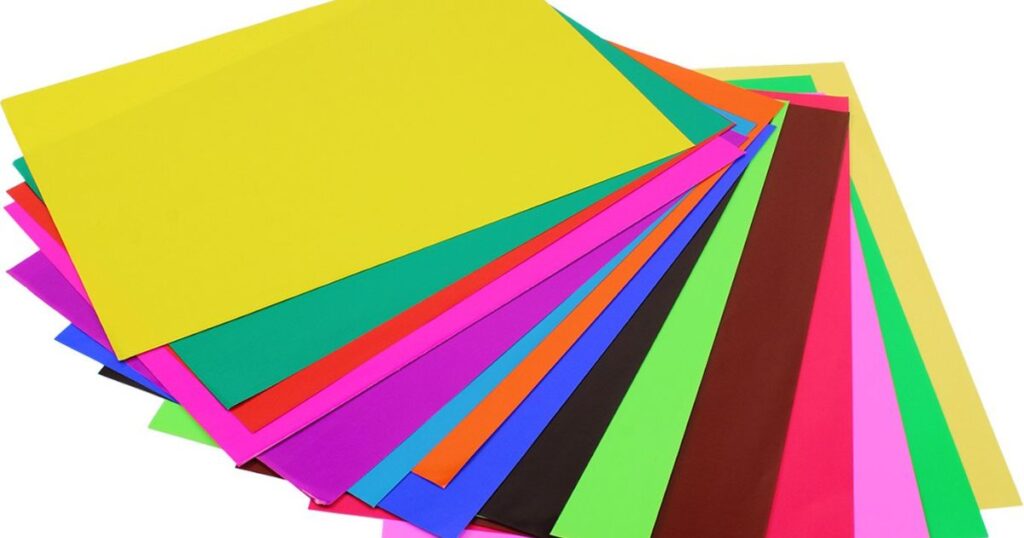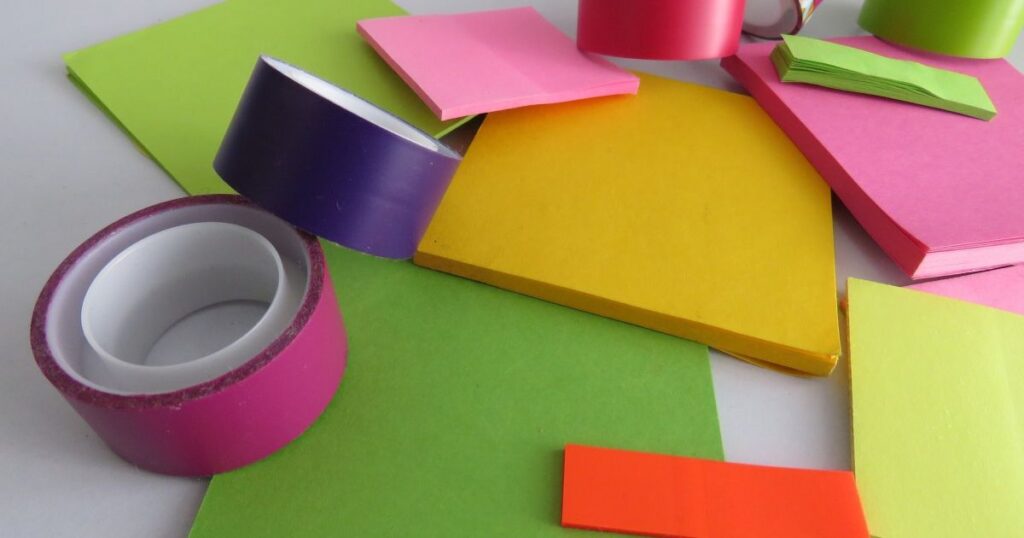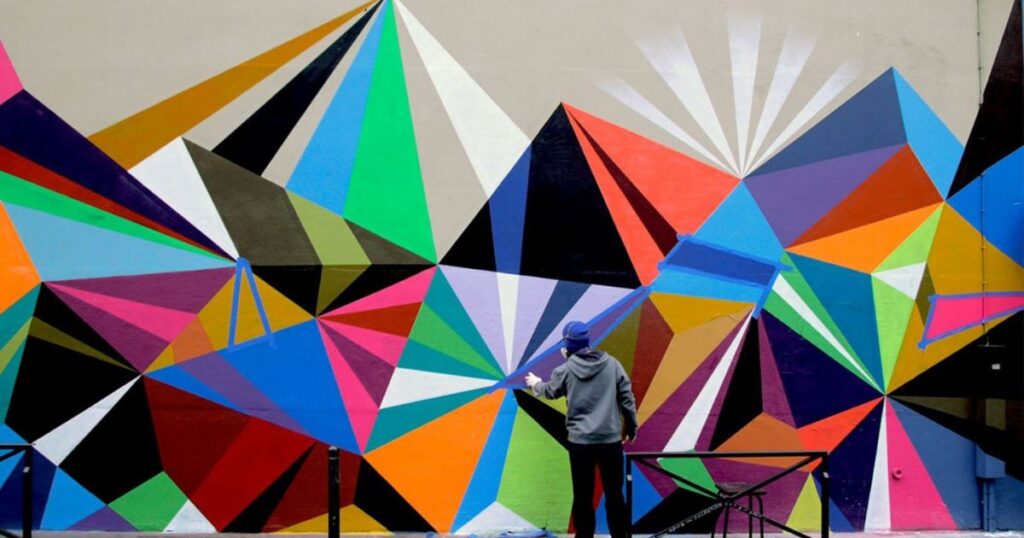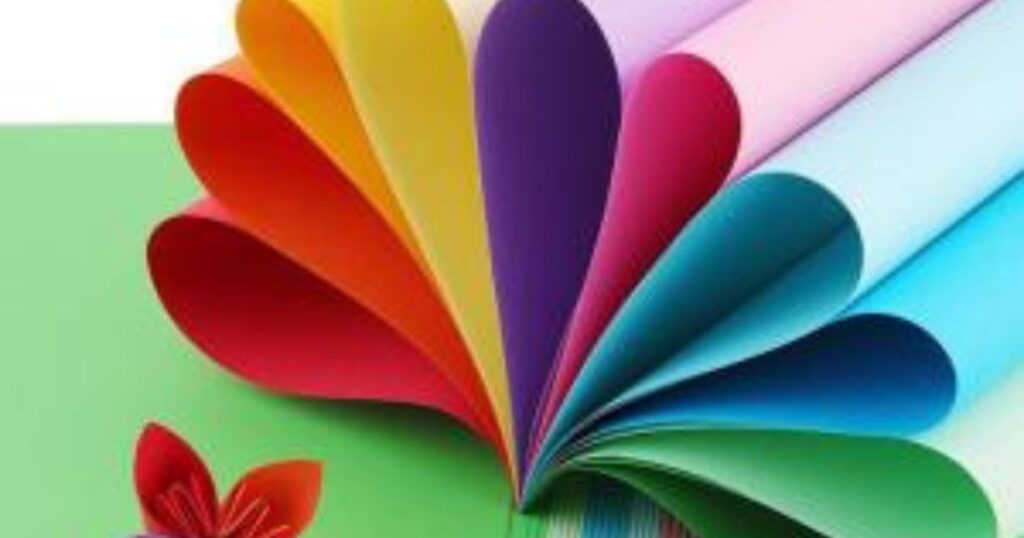Paper art has been a beloved creative outlet for centuries, captivating artists and enthusiasts with its endless potential for innovation and expression. From ancient origami traditions to modern paper quilling and papercutting, paper creations offer a vibrant world of artistry accessible to all skill levels and ages. Whether you’re a seasoned craftsperson or just starting your artistic journey, the colorful realm of paper art invites you to explore, experiment, and express yourself. In this post, we’ll explore paper art’s history, techniques, and joys, celebrate its versatility, and provide tips for creating your colorful color paper masterpieces.
The History of Paper Art
Paper art traces its origins to ancient China, where the invention of paper by Cai Lun in 105 CE revolutionized artistic expression. Early examples of paper craft include Chinese paper cutting, or jianzhi, used for decorative and ceremonial purposes. By the 8th century, papermaking spread to Japan, inspiring the development of origami, the intricate folding art that epitomizes precision and paper color creativity.
As papermaking techniques traveled along trade routes, paper art flourished globally. In Europe, the 14th and 15th centuries saw the rise of quilling, an art form involving rolled and shaped paper strips used to adorn religious texts. By the 20th century, modern artists embraced paper as a medium for sculpture, collage, and installations, blending traditional techniques with contemporary design. Today, paper art is a testament to human ingenuity, merging cultural heritage with innovation. From minimalist folds to complex sculptures, it continues to inspire awe, showcasing the versatility of this humble yet transformative The Environmental Benefits of Paper Grocery Bags material.
A Brief Introduction to the World of Paper art and its History.
Paper art is a captivating expression that transforms a simple, everyday material into intricate and stunning creations. Originating over 2,000 years ago with the invention of paper in ancient China, this art form has evolved into various styles, including origami, paper cutting, quilling, and paper-colored printer paper sculpture.
Origami, the craft of folding paper, has a long history in Japanese culture. and symbolizes elegance and precision. Papercutting, found in cultures like China, Mexico, and Eastern Europe, features elaborate patterns that often hold spiritual or celebratory significance. Quilling, with its rolled and shaped strips of paper, flourished during the Renaissance and continues to thrive as a modern craft. Today, paper artists worldwide push boundaries, creating everything from lifelike sculptures to large-scale installations. This enduring art form showcases paper’s versatility, blending tradition with innovation and proving that even the simplest materials can inspire extraordinary colored paper creativity.
Origami: The Japanese Art of Paper Folding
Origami, the art of folding paper into intricate shapes and designs, dates back over a thousand years in Japan. Initially used for ceremonial purposes, origami evolved into a creative pursuit, producing everything from delicate cranes to complex modular designs. Its appeal lies in its simplicity: artists can craft stunning works with a single sheet of paper and no cutting or colored paper glue.
Papercutting: Global Traditions
Papercutting, another ancient form of paper art, originated in China during the Tang Dynasty. Known as jian zhi, this intricate craft involved cutting symmetrical designs from paper to celebrate festivals and special occasions. Papercutting traditions spread globally, influencing Mexican papel picado, Polish wycinanki, and Swiss Scherenschnitte. Each style reflects the cultural narratives and aesthetics of its origins.
Quilling: The Art of Rolled Paper
Quilling, or paper filigree, emerged during the Renaissance when monks and nuns used it to decorate religious objects.Quillers shape and roll thin strips of paper into coils to produce a variety of intricate patterns, from intricate 3D sculptures to straightforward floral-colored copy paper designs. These historical foundations laid the groundwork for modern innovations, blending traditional techniques with contemporary styles.
Why Paper Art?
Paper art is a captivating fusion of creativity, precision, and versatility. This timeless medium transforms simple sheets of paper into intricate designs, sculptures, and masterpieces, showcasing the boundless potential of human imagination. Its accessibility makes it a universal art form; from beginners to seasoned artisans, anyone can explore its depths with just paper and a few tools.
The allure of paper art lies in its adaptability. Techniques like origami, quilling, paper cutting, and sculpting allow artists to express ideas in diverse, tactile ways. Paper art is also a sustainable choice, as recycled and handmade papers can be used to craft eco-friendly works. Moreover, paper art bridges cultures and traditions. It offers a rich tapestry of global inspiration, from Japanese kirigami to Western collage techniques. This art form doesn’t just create objects; it tells stories, evokes emotions, and adds beauty to our surroundings, proving that extraordinary creations can emerge from the simplest materials.
Techniques in Paper Art
Techniques in Paper Art” explores the diverse and imaginative ways artists transform paper into captivating creations. From intricate origami folds to the delicate precision of paper cutting, this artistic realm showcases the versatility of a seemingly simple medium. Techniques include quilling, where paper strips are coiled and shaped into decorative designs, and papier-mâché, used to craft sculptural forms through layered pulp.
Papermaking can become an art, incorporating textures and inclusions that enhance the final piece. Artists use layering, embossing, and folding to add depth and texture, while color application through dyes and paints breathes life into their creations. Innovative practices like 3D paper modeling and laser cutting push the boundaries of tradition, resulting in modern masterpieces. Perfect for beginners and seasoned creators alike, this guide delves into each technique’s tools, methods, and inspiration. Unleash your creativity with paper and turn it into a medium for storytelling, expression, and beauty.
Origami
Origami starts with a square piece of paper and transforms it through folds into objects like animals, flowers, or abstract shapes. There are two main types:
- Traditional Origami: Focusing on basic folds and classic designs like cranes and frogs.
- Modular Origami: Combining multiple folded pieces into complex structures.
- Single-Sheet Designs: Entire designs are created on one sheet without separating pieces.
- Layered Papercuts: Multiple sheets are layered to add depth and dimension.
- Quilling
- Tight Coils: Rolled tightly for defined shapes.
- Loose Coils: Allowing the coil to expand for softer designs.
- Scrolls: Unrolled shapes used for free-flowing patterns.
Paper mâché combines paper with glue or paste to create sculptures. It’s popular for larger projects like masks, piñatas, and figurines.
3D Paper Sculpting
This advanced technique uses precise cutting, folding, and assembly to build lifelike objects, from flowers to architectural models.
Incorporating Color into Paper Art

Color breathes life into paper art, transforming simple creations into vibrant expressions of creativity. Whether you’re crafting intricate origami, layered quilling, or paper sculptures, the thoughtful use of color adds depth, emotion, and personality. Start by exploring color theory: warm hues like red and yellow evoke energy, while cooler tones like blue and green offer calmness. Mix complementary or analogous colors for balance or bold contrasts for Paper For Business Cards drama.
Consider textures and finishes—glossy, matte or metallic papers enhance the visual impact. Experiment with hand-painted accents, dyed papers, or layered transparencies for unique effects. Gradation and shading can simulate depth, while patterns and prints introduce dynamism.
Let your color palette align with your theme—earthy tones for nature-inspired designs or bright, cheerful hues for celebratory pieces. Whether subtle or striking, your color choices should resonate with your vision, elevating the artistry and storytelling of your paper creations. With color, your imagination knows no bounds!
Colored Paper
Choosing colorful paper adds vibrancy without additional decoration. For added interest, consider using textured, patterned, or metallic paper. Hand-painting paper with watercolors, acrylics, or markers allows for custom designs. Try blending colors for gradient effects.
Layering Techniques
Layering papers of different colors creates striking contrasts and depth, especially in papercutting and quilling projects. Combine paper with glitter, fabric, or beads for multidimensional appeal.
Lighting
Illuminate your paper creations with LED lights or backlighting to highlight intricate details and bring them to life.
Creating Your Paper Art

Discover the joy of crafting with paper, a versatile and affordable medium that unleashes endless creativity! Creating Your Own Paper Art” introduces you to paper-based crafts, combining simplicity with artistic expression. From origami and quilling to collage and papier-mâché, the possibilities are boundless.
Start with basic tools like scissors, glue, and colorful paper, then explore advanced embossing, folding, and layering techniques. Learn to create elegant greeting cards, intricate decorations, or three-dimensional sculptures. This craft fosters mindfulness as you cut, fold, and assemble your unique designs, making it a perfect activity for stress relief. Ideal for all ages and skill levels, paper art offers a sustainable, eco-friendly way to create. Whether you’re a beginner or a seasoned crafter, this journey of turning simple sheets into stunning art pieces will leave you inspired and proud of your handmade creations. Dive into the art of paper crafting today!
For Beginners
For Beginners is your ultimate starting guide to mastering new skills, understanding foundational concepts, and building confidence in any subject. Designed with simplicity and clarity, this resource breaks down complex topics into manageable steps, making it accessible to anyone entering uncharted territory. Whether you’re diving into cooking, gardening, technology, or fitness, For Beginners offers clear instructions, helpful tips, and practical examples tailored to ease the learning curve.
The format encourages exploration without overwhelming the reader, emphasizing progress over perfection. With engaging visuals, relatable analogies, and real-world applications, you’ll feel empowered to try, learn, and grow at your own pace.
For Intermediate Artists
Intermediate artists have moved beyond foundational skills and are ready to refine their craft, explore new techniques, and deepen their creative voice. At this stage, artists often master medium-specific methods, such as advanced shading, color theory, or dynamic compositions. They start experimenting with blending traditional and modern styles, pushing boundaries to develop a unique artistic identity.
This level is perfect for diving into more complex projects, such as painting larger canvases, creating intricate designs, or working on multi-layered digital pieces. It’s also an opportunity to build confidence in tackling challenging subjects like human anatomy, detailed landscapes, or abstract concepts.
For Advanced Creators
Step into limitless creativity with Advanced Creators, designed for those pushing boundaries and redefining standards. This platform offers robust tools, advanced features, and seamless integrations to empower your innovative projects. Perfect for design, content creation, and technology experts, it caters to bold thinkers who demand precision and flexibility.
Access cutting-edge functionalities like AI-assisted workflows, customizable templates, and collaborative environments to bring your complex ideas to life. Whether you’re producing intricate designs, advanced coding solutions, or high-quality multimedia, this suite equips you with the versatility to excel.
Tips for Success
- Choose the Right Tools: Invest in quality scissors, cutting mats, and glue for professional results.
- Practice Patience: Intricate paper art takes time—embrace the process.
- Sketch First: Plan your design on paper before cutting or assembling.
- Experiment: Mix techniques to create unique works.
- Stay Inspired: Follow paper artists on social media or join local craft groups for fresh ideas.
Paper Art in the Modern World

Today, paper art has moved beyond personal hobbies to find a place in galleries, advertisements, and digital platforms. Artists like Yulia Brodskaya (quilling) and Karen Bit Vejle (papercutting) have brought paper art into the global spotlight, showcasing its potential as fine art.
Moreover, paper art’s eco-friendly nature aligns with growing sustainability trends, making it a popular choice for DIY enthusiasts and brands.
Conclusion:
Colorful paper creations offer an exciting blend of tradition, innovation, and accessibility. The possibilities are endless, whether you’re crafting for relaxation, celebration, or artistic expression. You can make colorful art that makes you and everyone who see it happy with just a little paper, a little creativity, and a willingness to try new things. So why wait? Grab some paper and start creating your next masterpiece today!
FAQ:
What is the Colored Paper Used for?
Colored paper is versatile and can be used for crafts, school projects, presentations, invitations, scrapbooking, flyers, and decorative purposes. It’s also popular for origami and artistic designs.
What Sizes does Colored Paper Come in?
Colored paper is typically available in standard sizes such as A4 (8.27 x 11.69 inches), letter size (8.5 x 11 inches), and 12 x 12 inches for crafting. Custom sizes may also be available depending on the manufacturer.
Is Colored Paper Recyclable?
Yes, most colored paper is recyclable, but it’s important to check if the paper contains any coatings, metallic finishes, or glitter, as these may not be recyclable. Always consult your local recycling guidelines.
Can Colored Paper be Printed on?
Yes, most colored paper is compatible with inkjet and laser printers. For best results, use lighter shades to ensure the printed text or images are visible. Check your printer settings to select the right paper type.
Are There Eco-friendly Options for Colored Paper?
Many brands offer eco-friendly colored paper made from recycled materials or FSC-certified wood. Look for papers labeled as chlorine-free or acid-free for an environmentally friendly choice.

